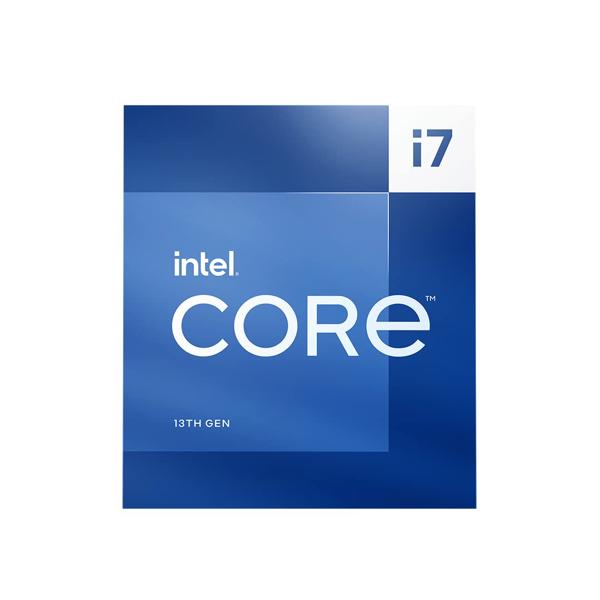
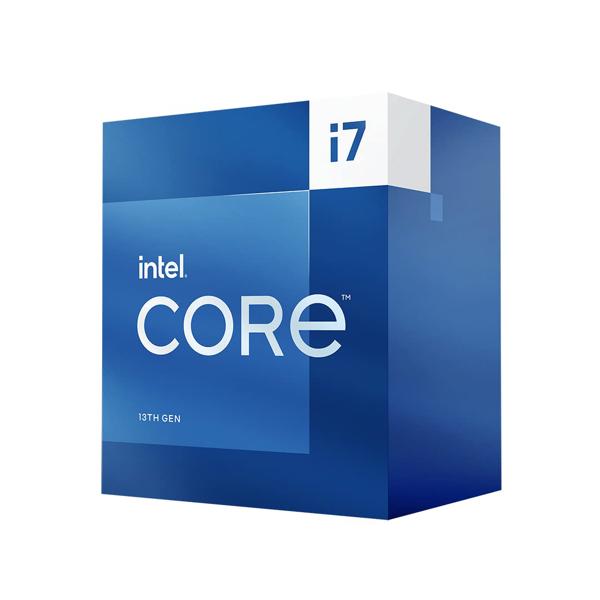
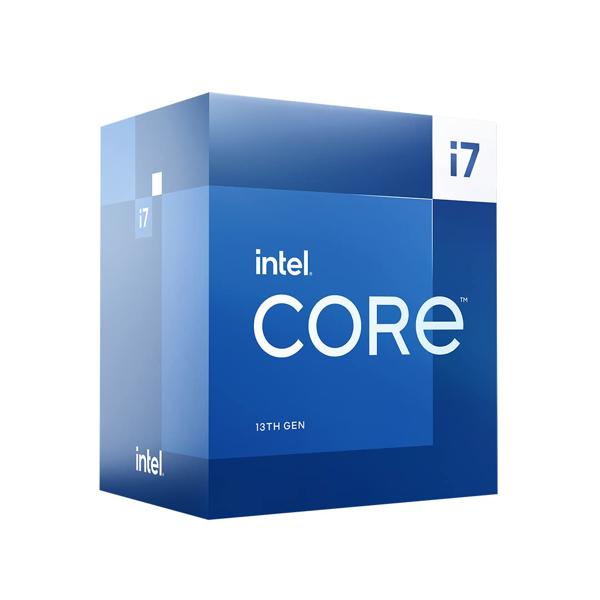
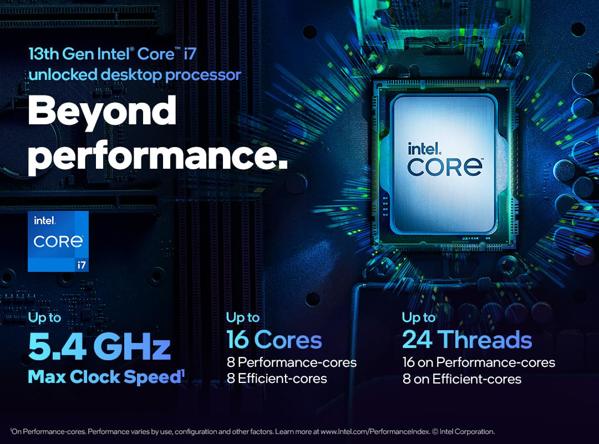

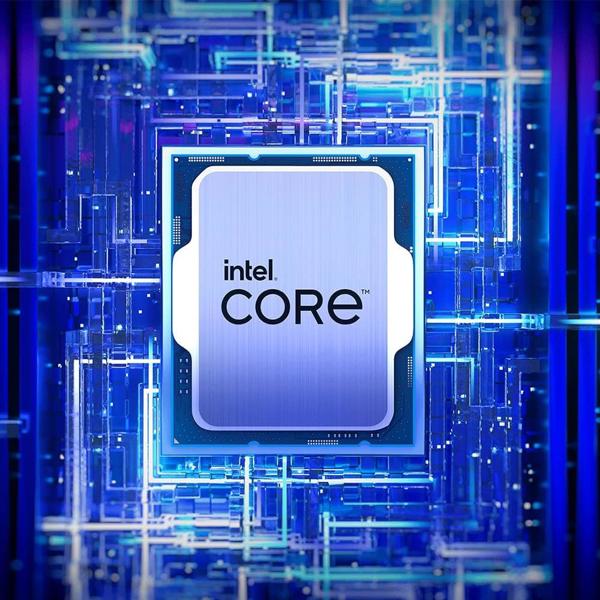






INTEL GEN 13TH I-7 13700K
Intel's 13th generation processors, known as Raptor Lake, build on Alder Lake's hybrid architecture, enhancing performance with more efficient cores. They support DDR5 memory and advanced features for superior gaming and multitasking.
Features
The Intel Core i7-13700K is part of Intel’s 13th-generation Raptor Lake family, designed for high-end computing and gaming. Positioned as a powerful mid-to-high range processor, the i7-13700K balances performance, power efficiency, and cost, making it an excellent choice for enthusiasts and professionals who demand strong multi-threaded performance and fast single-core speeds.
Core Specifications:
Core Configuration:
- Total Cores: 16 cores in total, composed of 8 Performance-cores (P-cores) and 8 Efficient-cores (E-cores). The P-cores are designed for demanding, single-threaded applications, while the E-cores handle lighter tasks and power management, allowing for a balanced load distribution.
- Total Threads: 24 threads, as the Performance-cores support Intel’s Hyper-Threading Technology, which enables two threads per core. This results in better multitasking and enhanced performance in multi-threaded applications.
Clock Speeds:
- Base Clock: The base clock of the P-cores is set to 3.4 GHz, while the E-cores run at 2.5 GHz. These base speeds ensure solid performance even under lighter workloads.
- Max Turbo Boost Clock: The P-cores can turbo boost up to 5.4 GHz, delivering excellent performance for single-threaded applications and demanding tasks. The E-cores can boost up to 4.2 GHz, providing additional speed when needed.
- All-Core Boost: During multi-threaded workloads, the P-cores can achieve up to 5.2 GHz on all cores simultaneously, enabling efficient performance when using multiple cores.
Cache:
- The i7-13700K comes with 30MB of Intel Smart Cache. This large cache allows frequently accessed data to be stored closer to the cores, reducing latency and improving overall performance.
Architectural Features:
Raptor Lake Architecture:
- Based on Intel’s 10nm process, Raptor Lake combines P-cores and E-cores in a hybrid architecture. This allows the i7-13700K to provide a balance of power efficiency and performance, catering to a variety of tasks from light office work to demanding gaming and content creation.
- The new architecture improves performance per watt, offering more computational power while keeping energy consumption and thermal output in check.
Intel UHD Graphics 770:
- Integrated into the i7-13700K is the Intel UHD Graphics 770 GPU. While it won’t compete with high-end dedicated GPUs, it is sufficient for light gaming, video streaming, and everyday graphics tasks. It's a good backup solution for users who don’t want a dedicated GPU.
Performance and Use Cases:
Gaming:
- The i7-13700K provides excellent gaming performance, offering high frame rates at 1080p, 1440p, and 4K resolutions when paired with a dedicated GPU. The 5.4 GHz turbo boost clock ensures responsive gaming performance, even in the most demanding titles.
- The hybrid architecture ensures that the i7-13700K can handle both the demanding game workloads and any background tasks like streaming or running additional programs.
Content Creation:
- For content creators, the i7-13700K is a powerful tool for video editing, 3D rendering, and digital content creation. With 16 cores, it excels at multi-threaded tasks like rendering and encoding, significantly reducing project turnaround times in software like Adobe Premiere Pro, DaVinci Resolve, and Blender.
- The high clock speeds ensure that single-threaded tasks, such as photo editing and other creative software, are handled with speed and precision.
Professional Workloads:
- Professionals in fields such as software development, data science, and engineering will benefit from the i7-13700K’s multi-threaded capabilities. The processor is excellent at compiling code, running virtual environments, and handling large datasets, making it an ideal choice for productivity-driven tasks.
- Its ability to handle both single-threaded and multi-threaded workloads means developers can rely on the i7-13700K to complete tasks quickly and efficiently.
Advanced Features:
PCIe 5.0 Support:
- The i7-13700K supports PCIe 5.0, providing a significant bandwidth boost over PCIe 4.0. This is ideal for next-gen graphics cards, storage devices, and future-proofing your system for upcoming hardware.
DDR5 and DDR4 Memory Support:
- The i7-13700K is compatible with both DDR4 and DDR5 memory, giving users flexibility in choosing either cost-effective DDR4 or high-performance DDR5 RAM for their system. DDR5 offers faster memory speeds, which translates into improved overall system performance, especially for memory-intensive applications.
Intel Thermal Velocity Boost:
- This technology dynamically adjusts the clock speed based on thermal headroom, allowing the i7-13700K to automatically boost clock speeds to 5.4 GHz when temperatures allow, ensuring higher performance when needed for burst workloads like gaming or video editing.
Intel Adaptive Boost Technology:
- Adaptive Boost Technology allows the processor to dynamically adjust the performance of its P-cores based on power and thermal conditions, providing higher sustained performance during multi-core tasks without thermal throttling.
Overclocking Support:
- As a "K" model, the i7-13700K is unlocked for overclocking. Enthusiasts can push the processor’s clock speeds beyond its stock limits for even more performance. This flexibility makes the i7-13700K a great choice for those looking to maximize their performance through manual tuning.
Power and Cooling Requirements:
- Thermal Design Power (TDP):
- The i7-13700K has a base TDP of 125W, but it can draw up to 253W under full load, especially when boosting or overclocking. This means that users need an efficient cooling solution to maintain optimal performance during heavy workloads or gaming sessions.
- Cooling Solutions:
- For optimal cooling, consider using high-end air coolers or all-in-one (AIO) liquid cooling systems. These are necessary to keep the processor cool during intense workloads. Adequate cooling is critical when overclocking the i7-13700K to ensure stability and avoid thermal throttling.
Benefits for Users:
- Gamers: The i7-13700K delivers exceptional gaming performance, capable of handling the latest AAA games at high settings and frame rates. Its hybrid architecture ensures that gaming is smooth while background processes run without slowing down the system.
- Content Creators: The processor’s powerful multi-core performance makes it perfect for video editing, 3D rendering, and other creative tasks. It allows content creators to complete projects faster and with greater efficiency, especially with demanding creative software.
- Professional Users: The i7-13700K is ideal for professional workloads that require a mix of single-threaded and multi-threaded performance. Its ability to run heavy tasks without significant bottlenecks makes it an excellent choice for developers, engineers, and researchers.
Specifications
| TOTAL NUMBER OF CORE | 16 |
|---|---|
| TOTAL NUMBER OF PERFORMANCE CORES | 8 |
| TOTAL NUMBER OF EFFICIENT CORES | 8 |
| TOTAL NUMBER OF THREADS | 24 |
| MAX RAM MEMORY SUPPORT | 192 GB |
| MOTHERBOARD SUPPORT | 600 / 700 SERIES |
| MEMORY SUPPORT | DDR-4 UPTO 3200 MT/S, DDR-5 UPTO 5600 MT/S |
| MAX MEMORY BANDWIDTH | 89.6 GB/S |
| EFFICIENT CORE BASE FREQUENCY | 2.50 GHZ |
| EFFICIENT CORE MAX TURBO FREQUENCY | 4.20 GHZ |
| PERFORMANCE CORE BASE FREQUENCY | 3.40 GHZ |
| PERFORMANCE CORE MAX TURBO FREQUENCY | 5.40 GHZ |
| SOCKET TYPE | LGA 1700 |
| LITHOGRAPHY | 7NM |
| TOTAL CACHE | 30 MB |
| TOTAL L2 CACHE | 24 MB |
| THERMAL JUNCTION | 100 |
| PCIe REVISION | 4.0 AND 5.0 |
| MAX NUMBER OF PCIe LANES | 20 |
| PROCESSOR TDP | 253 W |
| INBUILT GRAPHIC PROCESSING UNIT | YES |
| GPU NAME | INTEL UHD GRAPHIC 770 |
| GPU BASE FREQUENCY | 300 MHZ |
| GPU MAX DYNAMIC FREQUENCY | 1.60 GHZ |
| GPU VIDEO MAX MEMORY | HALF OF SYSTEM MEMORY |